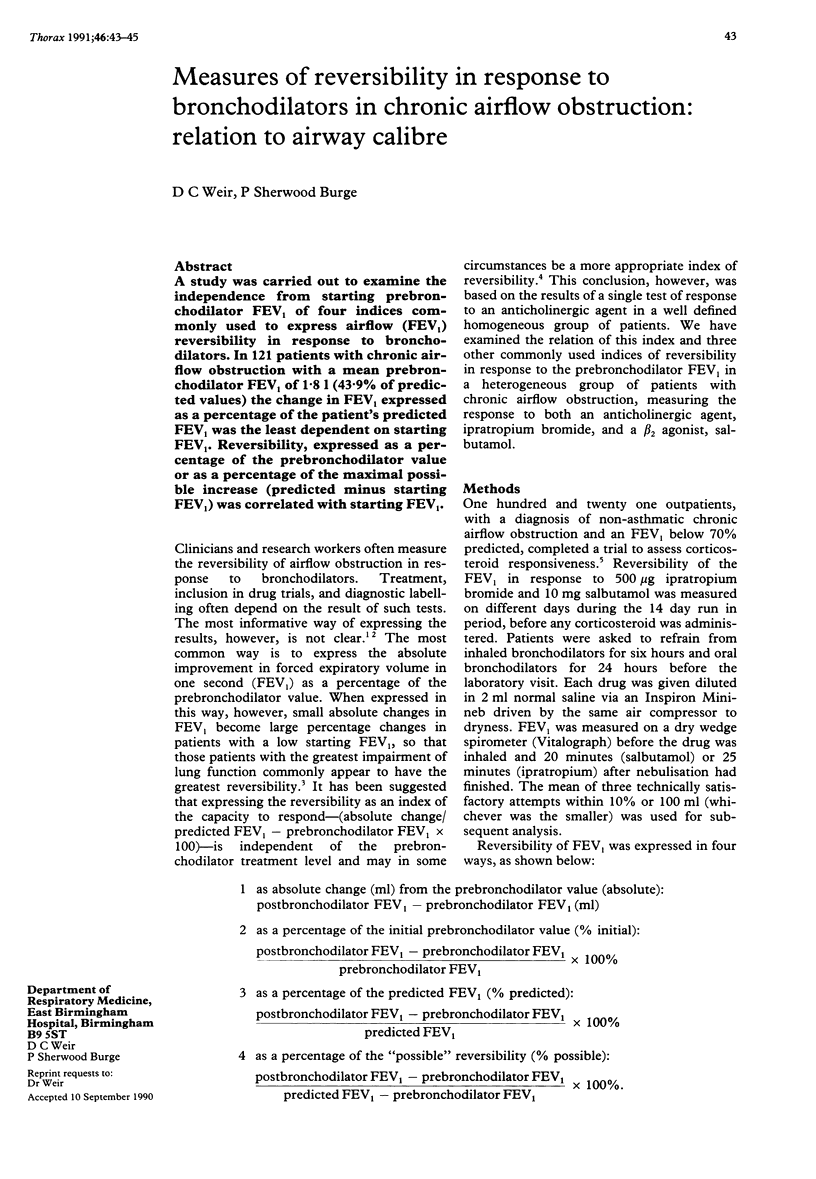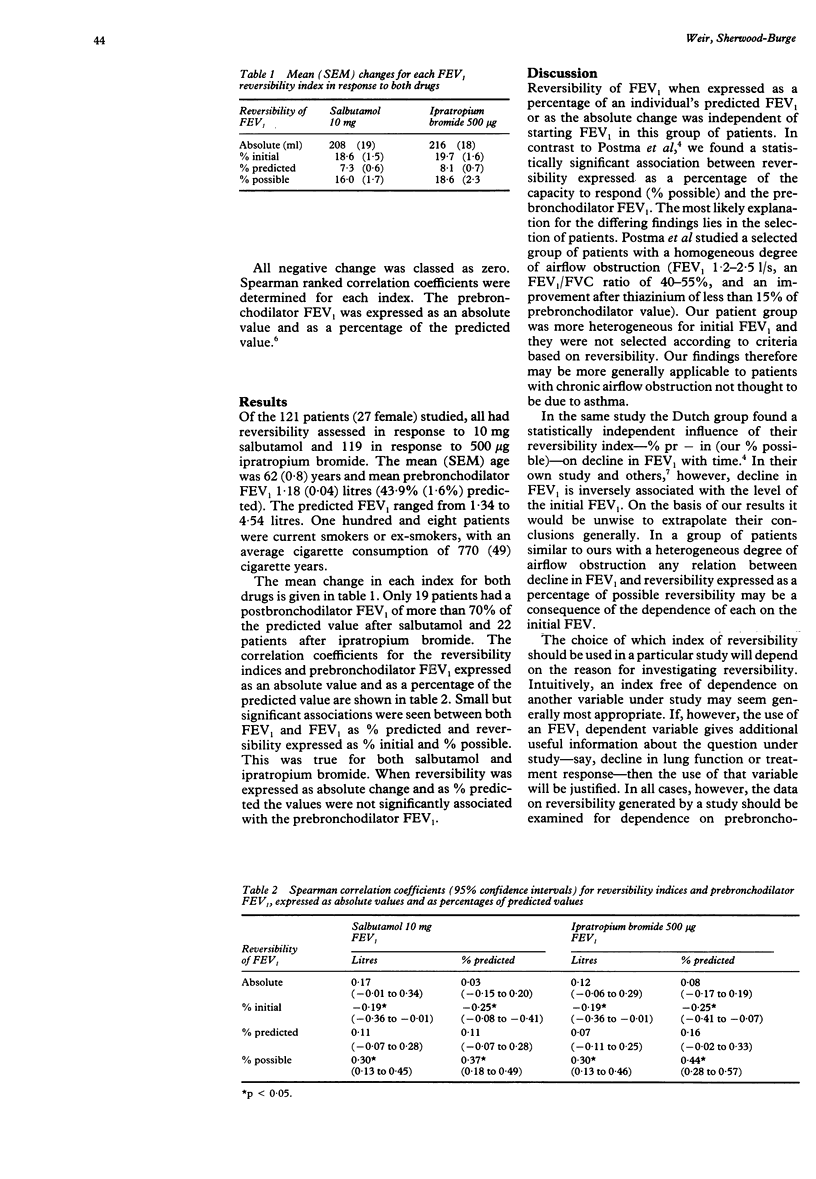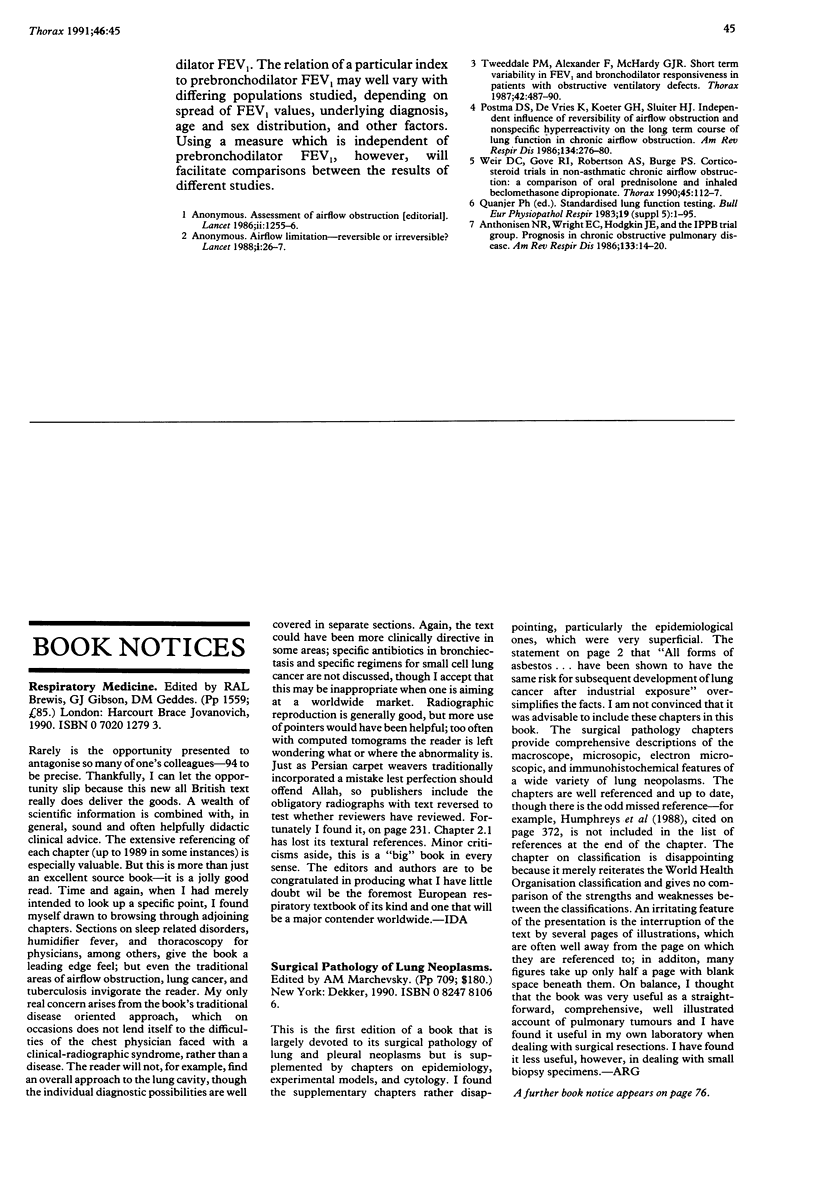Abstract
A study was carried out to examine the independence from starting prebronchodilator FEV1 of four indices commonly used to express airflow (FEV1) reversibility in response to bronchodilators. In 121 patients with chronic airflow obstruction with a mean prebronchodilator FEV1 of 1.81 (43.9% of predicted values) the change in FEV1 expressed as a percentage of the patient's predicted FEV1 was the least dependent on starting FEV1. Reversibility, expressed as a percentage of the prebronchodilator value or as a percentage of the maximal possible increase (predicted minus starting FEV1) was correlated with starting FEV1.
Full text
PDF


Selected References
These references are in PubMed. This may not be the complete list of references from this article.
- Anthonisen N. R., Wright E. C., Hodgkin J. E. Prognosis in chronic obstructive pulmonary disease. Am Rev Respir Dis. 1986 Jan;133(1):14–20. doi: 10.1164/arrd.1986.133.1.14. [DOI] [PubMed] [Google Scholar]
- Postma D. S., de Vries K., Koëter G. H., Sluiter H. J. Independent influence of reversibility of air-flow obstruction and nonspecific hyperreactivity on the long-term course of lung function in chronic air-flow obstruction. Am Rev Respir Dis. 1986 Aug;134(2):276–280. doi: 10.1164/arrd.1986.134.2.276. [DOI] [PubMed] [Google Scholar]
- Weir D. C., Gove R. I., Robertson A. S., Burge P. S. Corticosteroid trials in non-asthmatic chronic airflow obstruction: a comparison of oral prednisolone and inhaled beclomethasone dipropionate. Thorax. 1990 Feb;45(2):112–117. doi: 10.1136/thx.45.2.112. [DOI] [PMC free article] [PubMed] [Google Scholar]


